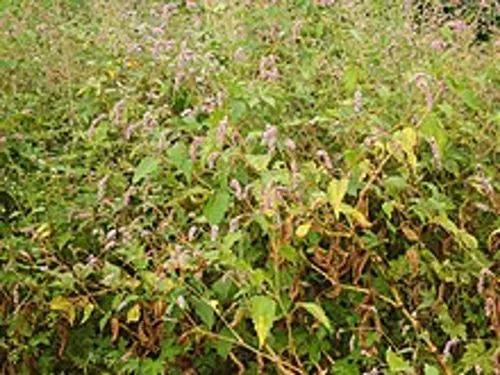Veronica spicata is a species of flowering plant in the family Plantaginaceae. It is 1–3 feet tall and bears 1 foot long spikes with blue, pink, purple and white flowers. This species is native to northern Europe and Asia.
Spiked speedwell Care
Veronica spicata



Veronica spicata, commonly known as spike speedwell, is an upright, clump-forming, herbaceous perennial that typically produces a summer-long bloom of tiny, star-shaped, violet-blue flowers in dense, long-flowering, tapered-at-the-top, spike-like terminal racemes atop stems rising well above a foliage mound to 24-30” tall. Foliage consists of toothed, narrow, linear to lanceolate, medium green leaves (each to 2” long). Flowers typically bloom from mid-June to August. Flowers are attractive to bees and butterflies. Cultivars with blue, violet-blue, pink and white flowers are available in commerce. Genus name honors Saint Veronica who reportedly gave a handkerchief to Jesus so he could wipe sweat from his face on the way to Calvary, with some genus plants having markings that resemble the markings on the sacred handkerchief.
How to Care for the Plant

Water

Spiked speedwell copes well with short dry periods. however, it does not tolerate water logging at all. water only in hot summer months. fertilization. like all speedwell species, spiked speedwell is not very demanding. it hardly needs any nutrients. give it a little compost or horn shavings in spring and summer.

Pruning

It is important because damaged leaves and stems can actually be an energy drain on your plant. By removing those dead parts, you're taking some of that work off your plant’s plate and allowing it to divert its energy into healthy leaves and new growth!

Fertilizer

An organic, balanced, liquid fertilizer once a month during growth period is recommended.

Sunlight

Semi-shade location.

Soil

Planting instructions will suggest planting in a sterile potting mix.

Temperature

This plant can be grown in the areas with the lowest winter temperature of −40°C (−40°F).

Container

Increase pot size by 2.5-5 cm (1 to 2 inches) in diameter for plants that are growing in pots 25.4 cm (10 inches) in diameter or less. For larger plants, those growing in pots greater than 10 inches in diameter, increase the pot size by 5 or 7.62 cm (2 or 3 inches) in diameter.

Popularity

2,217 people already have this plant 366 people have added this plant to their wishlists
Discover more plants with the list below
Popular articles






